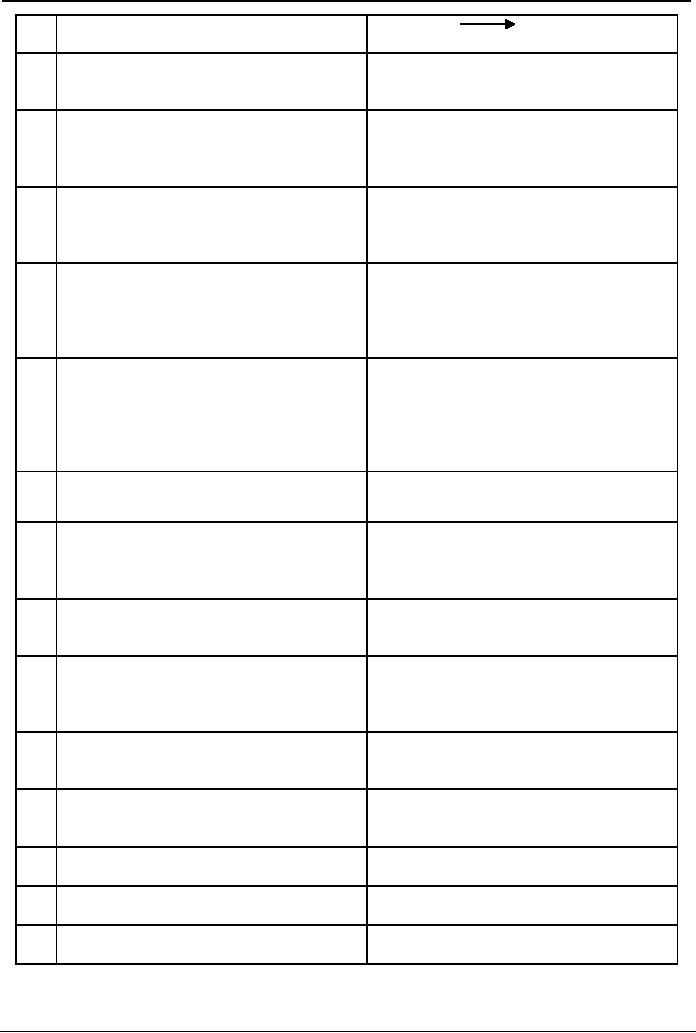 |
SOURCES OF NEWS III:National News Agencies, HARD NEWS, SOFT NEWS |
| << SOURCES OF NEWS II:MONITORING, NEWS/ PRESS RELEASE |
| REPORTING:ORDER OF REPORTING, REPORTER’S QUALITIES, Well informed >> |

Radio
News, Reporting and Production
MCM515
VU
LESSON
15
SOURCES
OF NEWS III
NEWS
AGENCY
A
news agency is an organization of journalists
established to supply news reports to
organizations in the
newspapers,
magazines, and radio and
television channels. They are
also known as wire services or
news
services.
News
agencies generally prepare hard
news stories that can be
used by other news
organizations with
little
or
no modification. They provide these
articles in bulk, electronically through
wire services, today, they
frequently
use internet.
National
News Agencies:
Associated
Press of Pakistan (APP)
Pakistan
Press Association, which was later,
renamed as Pakistan Press
International (PPI)
United
Press of Pakistan (UPP)
Independent
News Pakistan (INP)
News
Network International
(NNI)
SANA
(South Asian News
Agency)
Online
News International
(ONI)
International
News Agencies:
Reuters
Agence
France Presse
ANSA
(ITALY)
Australian
Associated Press
Canadian
Press
China
News Service
Iran
News Agency (IRNA)
HARD
NEWS
Spot
news that contains solid
facts & figures about an
incident, to be treated as
news.
Hard
News Formula:
Hard
news story covers a story by answering
the following questions:
What?
When?
Where?
Why?
Who?
How?
SOFT
NEWS
Stories
covering the details, socio-cultural and
economic reasons and background of a hard
news story are
called
Soft
News.
Difference
between Radio News and Newspaper
News:
RADIO
NEWS
NEWSPAPER
NEWS
1.
News
on radio is presented soon after the To
get published, a news item has to
wait for
event
takes place.
24
hours.
44

Radio
News, Reporting and Production
MCM515
VU
2.
Follow-ups
are broadcast
promptly.
Follow-ups
next
day.
3.
News
on radio is to-the-point yet
crisp.
News
in newspaper is detailed.
4.
News
items to be given in a news bulletin
are All types of stories
are published in
selective
only Frontline.
newspaper.
5.
Personal
approach The newsreader
talks to Impersonal approach.
every
individual listener.
6.
All
headlines are given at the start of the
news Every story is under
its headline.
bulletin
and then, normally after a short
break
the
details are read
out.
7.
News
is given in past and future
tense.
Present
tense is used in headlines in
English
newspapers
for past events. For
future events
contracted
headlines are used e.g.,
The
President
visits U.K. (past)
The
President to visit U.K.
(future)
8.
Simple
& spoken vocabulary.
Written
style & difficult vocabulary may
also
be
employed.
9.
Simple
sentence structure, no punctuations, Complex
structure
with
all
required
but
stresses and pauses.
punctuations.
10.
No
maps, charts, and graphs
can be used for Maps,
charts, and graphs can be
used.
illustration.
11.
News
is written and presented in a
sober way; Catchy and
saucy language and pictures
are
a
family feeling is given to the
listeners.
also
used.
12.
More
accessibility; caters illiterates
too.
Limited
accessibility & caters only
literates.
13.
Can
present news as it happens
but with Can present
news as it happens with
visual.
voice
and sound only.
14.
More
difficult since only words
are used
Easier
since pictures can be
used.
15.
Can
be heard even in fields.
Cannot
be carried everywhere.
16.
No
maps, charts, graph.
Maps,
charts, graphs.
45
Table of Contents:
- WHAT RADIO IS:HISTORY OF RADIO, MARCONI –THE INVENTOR
- HISTORY OF RADIO:B.B.C. – 1922, Radio in Sub-Continent, PBC SERVICES
- OBJECTIVES OF BROADCASTING IN PAKISTAN:Information, Islamic ideology
- NEWS VALUES I:CONFLICT, PROGRESS, VICTORY AND DEFEAT
- NEWS VALUES II:TIMELINESS, PROXIMITY, NOVELTY, HUMAN INTEREST
- NEWS VALUES AND ELEMENTS OF NEWS:MISCELLANEOUS NEWS VALUES
- MEASURING THE IMPORTANCE OF NEWS:Intensity of an Event, NEWS STORY TYPES
- TYPES OF NEWS STORIES II:SIMPLE TYPES, ILLNESS, DEATH
- TYPES OF NEWS STORIES III:Conspiracy, Drug Trafficking, Lunar Months
- TYPES OF NEWS STORIES IV:COMPLEX NEWS, Forms of Government, Monarchy
- TYPES OF NEWS STORIES V:Education, Research, Religion
- TYPES OF NEWS STORIES VI:Lifestyles, Receptions, Entertainment
- SOURCES OF NEWS I:Network of Reporters, QUALITIES OF A REPORTER
- SOURCES OF NEWS II:MONITORING, NEWS/ PRESS RELEASE
- SOURCES OF NEWS III:National News Agencies, HARD NEWS, SOFT NEWS
- REPORTING:ORDER OF REPORTING, REPORTER’S QUALITIES, Well informed
- A SUCCESSFUL RADIO REPORTER:Briefing, Reporter’s Ammunition, Meeting Deadline
- INTERPRETATIVE REPORTING I:Growth of Interpretative Reporting
- INTERPRETATIVE REPORTING II:Factual Background, SPEECH STORY
- INTERPRETATIVE REPORTING III:FIRES & ACCIDENTS, CRIME STORIES
- INVESTIGATIVE REPORTING I:Thalidomide Scandal, Watergate Scandal
- INVESTIGATIVE REPORTING II:Identification of the problem, INTERVIEW
- TYPES OF INTERVIEW:Hard News Interview, Informational Interview
- ESSENTIALS OF A GOOD INTERVIEW I:Comments and Opinion, Topic must be specific
- ESSENTIALS OF A GOOD INTERVIEW II:Preparation of the Interview, Language
- RADIO NEWS GLOSSARY:Actuality, Cut, Voicer, Wrap, Hourly, Lead
- FUNDAMENTALS OF NEWS WRITING:Inverted Pyramided Style, Telling the Story
- FUNDAMENTALS OF WRITING NEWS FOR RADIO I:Language
- FUNDAMENTALS OF WRITING NEWS FOR RADIO II:Complex numbers
- ESSENTIALS OF A NEWSCASTER:Authority, Credibility, Language, Pronunciation
- PRODUCTION AND PLANNING:Principals of Planning a Program
- PRODUCER & BUDGETING:Strengths of a Radio Program, Budgeting a Program
- JARGONS OF PRODUCTION (Continued):Frequency spectrum, Dead studio
- TYPES OF TALK:Qualification of a Talker, Essentials of a talk, Vetting a talk
- DISCUSSION:Controlled Discussion, Live Discussion, Current affairs
- DISCUSSION:Selection of the TopicKnowledge of the Topic, Narrowing down the topic
- RADIO FEATURE:Sound Effects, Narration, Dramatic Feature, Religion, Personalities
- RADIO DOCUMENTARY:Commentary, History, Persons, Things, Phenomena
- DRAMA:Solo plays, Series, Serial, Soap, Components of Drama
- SPECIAL AUDIENCE PROGRAM:Children’s Programs, Women’s programs
- SPORTS PROGRAM:Live Programs, Recorded Programs, Preparation of OB
- THE MUSIC I:Folk Music, Classical Music, Light Music, Pop Music
- THE MUSIC II:Classification of Raga In Terms Of Notes, Aado, Khaado
- ETHICS & LIMITATIONS OF MEDIA:Domain of Freedom of Media, Defamation
- RECAP:What Radio Is, Timeliness, Elements of news, Types of Reporting, Production